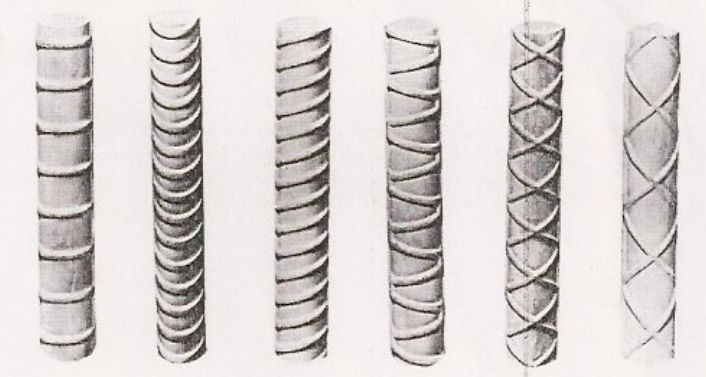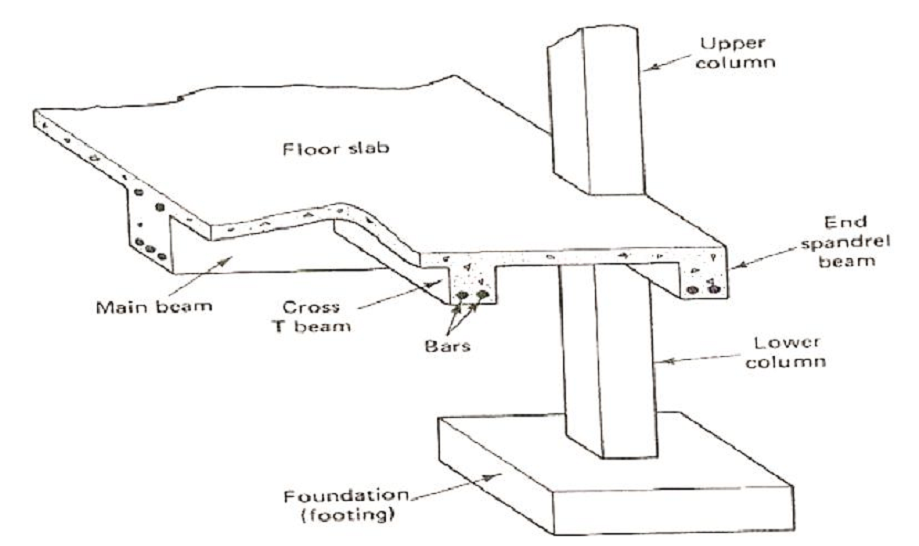Introduction
Concrete is a mixture of ballast, sand, cement and water mixed in an appropriate proportion. It is needed to build foundations, beams and other structures during the construction. For many years now people have been using concrete in the construction of storey buildings, bridges, roads and other structures. Many engineers have not tried to find means of making these structures stronger. This report seeks to explain the various methods of strengthening concrete and concrete structures.
The strength of the structures constructed depends on the nature of the concrete. The stronger the concrete, the stronger the structures built. Thus, various reinforcement methods can be adopted to make the concrete stronger.
Use of steel and other materials
Steel structures can be constructed to support concrete works to ensure they last long. When constructing beams, one uses steal metals of appropriate length and diameter to strengthen the structures. Other materials with similar expansion and contraction behaviours can be used in the construction of the structures together with concrete. The diagrams below show how concrete pillars can be reinforced with steel depending on the shape and design of the pillar.

The steel metal can be made into different patterns as shown in the pillars above. It is then able to strengthen the pillars made of concrete as the major component (Kim, 2007, p. 45).
Proper proportions
One way of obtaining strong concrete structures is by mixing the right proportions of the cement, ballast, sand and water. There are various aspects that affect the ratio in which they should be mixed such as the structure that the concrete is to be used to make. For instance, concrete for making beams usually contains components with different ratios from that for making floors and foundations.
The appropriate ratios for each structure can be found in construction and material science books since they vary depending on the structure to be built. Such an example is the chart below (Schwartz, 1993, p. 76).

Scarcity of one material could also see one reduce its proportion in the concrete which is what happens most of the time. However, this habit should not be encouraged as it produces weak concrete and the structures obtained from such concrete have a short lifespan. Hence, for strong structures the right proportions are needed (Nawy, 2001, p. 102).
Impact of components used
Water
Another factor is the type of water used in making the concrete since it directly determines its strength. Water is a natural substance made up of hydrogen and oxygen as its major components and the presence of the hydrogen bond in water makes it a good solvent. As a result of this, water may dissolve substances like minerals and depending on where the water is obtained from, the concentration of the minerals will vary. For instance, rain water contains a different concentration of calcium compared to lake water. The chemical reactions between the minerals dissolved in water and the other components of concrete affect the strength of concrete. Thus, to ensure the concrete obtained is strong enough water with the right concentrations of minerals is recommended.
The concentration of the various minerals in water can be determined in the laboratory. Samples from different sources of water can be taken and the relevant experiments carried out. This way the water source with the most appropriate concentration of the minerals is used. The hardness or softness of water also has an effect on the strength of concrete and it should be determined in the laboratory to ensure water with the most appropriate “texture” is used in the mixing of concrete components (Nawy, 2011, p. 56).
Ballast
The strength of concrete depends on the ballast. Ballast is obtained from splitting large stones into small appropriate sizes for construction. The type of stone affects the type of ballast obtained which in turn affects the strength of the concrete. Stones originate from rocks after they fragment through either natural or man-made processes. The chemical compositions of the rocks are different and this affects the strengths of the rocks. For example, ignite rock has a different chemical composition from pumice rock and this makes their strengths different (Nawy, 2001, p.29).
A strong rock produces strong ballast which in turn produces stronger concrete. Like in the case of water, the chemical composition and the strengths of different rocks should be determined from laboratory experiments. This way the strongest rocks are used in making ballast thus ensuring structures made from this ballast last long enough.
The size of the ballast is also an important parameter as far as the strength of concrete is concerned. Smaller sizes of ballast tend to be strongly bound together making the concrete stronger. Ballast is obtained from breaking rocks using machines or handheld equipment. It is proven that machines produce smaller sized ballast than the ballast created using hand tools. Therefore, it is advisable to use machines when breaking the stones in order to obtain smaller ballast (Nawy, 2011, p. 67).
Cement
The type of cement used determines the strength of concrete. Cement is the binding component of concrete that is loose when wet but holds tightly when it dries up. It is obtained from crushing limestone to very fine pieces and mixing it with appropriate chemicals. There are different manufacturers of cement and the strength of the concrete depends on the binding ability of the cement which varies depending on the chemical composition of the cement as different manufacturers add different proportions of chemicals during the manufacturing process.
Engineers and constructors have the right knowledge to tell which company uses the right proportions of the chemicals. Cement with the correct ratios of the chemicals should be used in making concrete if its strength is of importance. The chemicals mixed are usually heated at high temperatures for a given duration after which water is added and then left to solidify. Engineers can investigate the binding abilities of different brands of cement before deciding on the most appropriate brand to use. This ensures that the concrete used is strong and in turn produces strong structures.
Sand
The type of sand used is of paramount importance in determining the strength of the concrete. Sand is a key element of concrete and is mined from different sources such as water bodies or from grounds that are rich in sandy soil. The chemical compositions and grain sizes of sand from these sources are not the same. It is the chemical composition of sand that determines the reaction of sand with other components when mixed which in turn affects the strength of the concrete. The most appropriate chemical composition of sand can be determined through experimental means. This type of sand should then be adopted in making all structures to ensure they are long lasting (Nawy, 2011, p. 45).
Foundations
Reinforcing concrete structures can be done using strong foundations that are deep such as the one below. The foundation was first dug then filled with different layers of concrete and stones. This way it is able to support the weight of the structure (Varghese, 2009, p. 51).

Mixing techniques
The mixing techniques employed when making concrete can also affect the strength of the concrete. Thus, thorough mixing of ballast, sand, cement and water should be done to obtain strong concrete. This can be achieved by the use of machines in the mixing process (Nawy, 2001, p. 157)
Use of wooden structures
Apart from the preparation process, some structures as mentioned earlier can also be constructed to provide support. Wooden supports can be put in place to support drying pillars of concrete. These supports are put in place for a short duration when the pillars are still weak and wet. They are later removed after the pillars dry and become stronger (Nawy, 2009, p. 75).
Type of design
The designs adopted in constructing concrete structures also affect their strength as some designs enable engineers to build strong structures while others limit them to building weaker structures. Proper weight and beam balancing calculations should be adopted to ensure the structures constructed are strong. More so, the sizes of the concrete structures to be constructed should be considered as they also affect the strength of the structures built. Tall structures should be constructed with wide bases to ensure they are stable and strong (Varghese, 2009, p. 65).
Conclusion
In conclusion, concrete structures will last longer if the concrete used to construct them is improved. Thus, reinforcement of concrete is an aspect that engineers need to embrace and the methods discussed in this article can be of great help in construction works. Engineers need to consider the type of components used, the mixing techniques, use of wooden structures, the use of steel rods and the most appropriate designs to ensure the concrete structures obtained last long. If all the factors explained in this article are adopted in construction works then we will be home and dry as far the strength of concrete structures in concerned.
Reference List
Kim, J 2007, ‘Joint shear behavior of reinforced concrete beam-column connections subjected to seismic lateral loading’, Dissertation Abstracts International, Vol. 69, no. 2, pp. 44-46.
Nawy, E. G 2001, Fundamentals of high-performance concrete, John Wiley & Sons, Upper Saddle River, NJ.
Nawy, E. G 2009, Reinforced concrete: a fundamental approach, Prentice Hall, Upper Saddle River, NJ.
Nawy, E. G., Opaluch, W., & Stark, H 2011, Prestressed concrete: a fundamental approach. Pearson Education Limited, Princeton, NY.
Schwartz, M 1993, Basic engineering for builders, Craftsman Book Company, Carlsbad, CA.
Varghese, P 2009. Design of reinforced concrete foundations, PHI Learning, New Delhi, India.